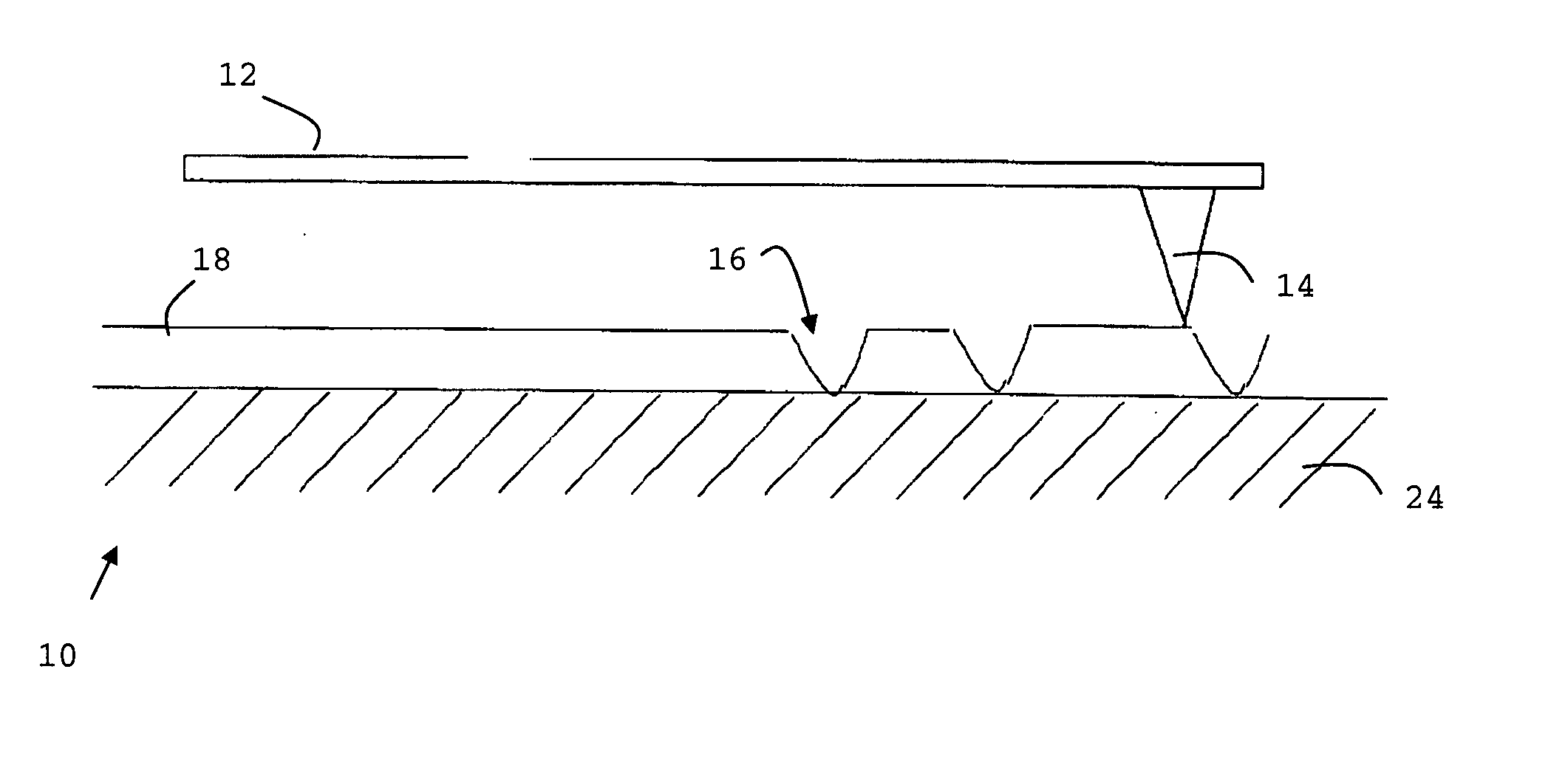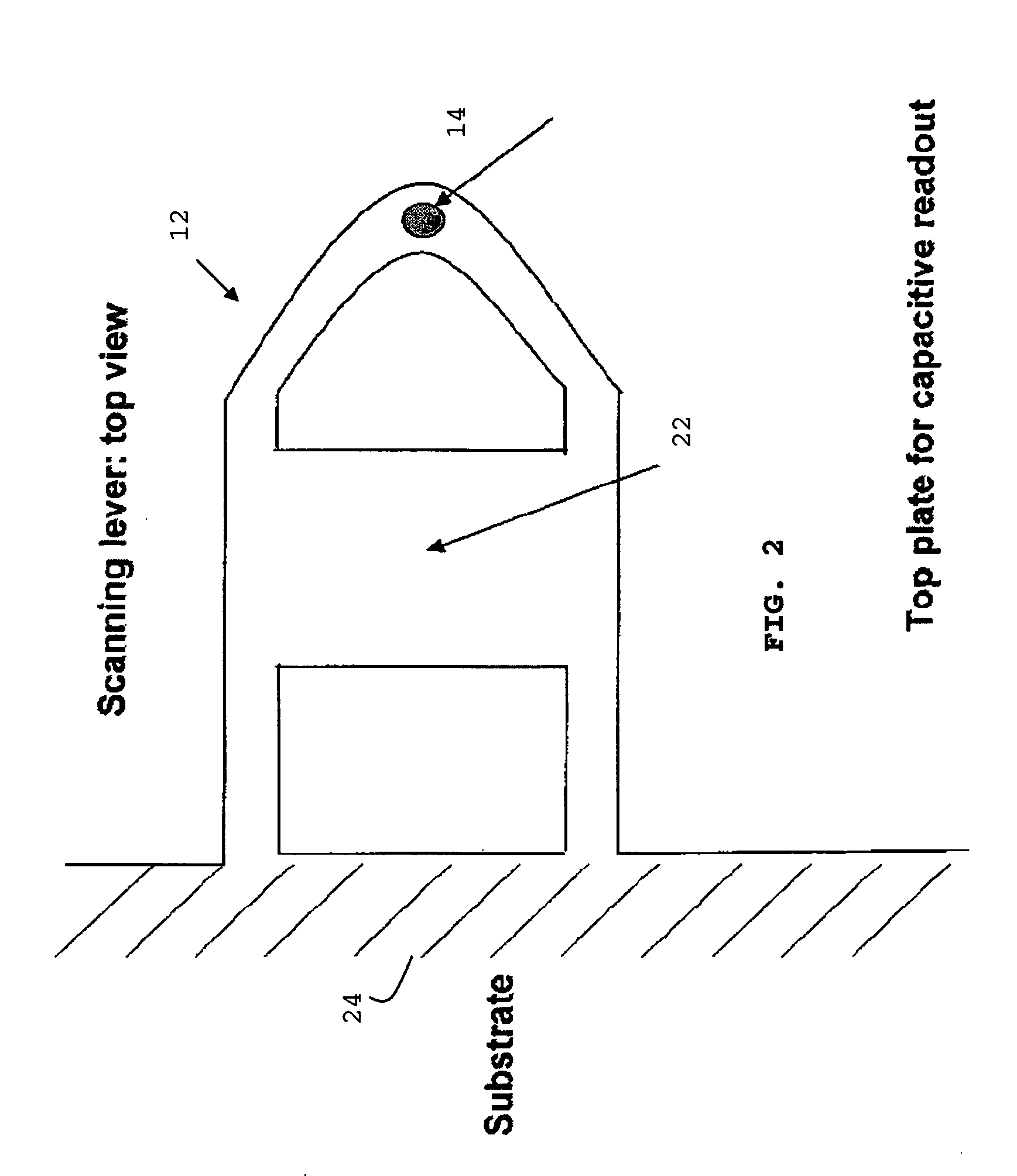Storage device and method
a technology of storage devices and storage devices, applied in the field of storage devices, can solve the problems of high resolution required, serious constraints in implementing an active servo control with reasonable speed, and limiting the data rate to rather low values
- Summary
- Abstract
- Description
- Claims
- Application Information
AI Technical Summary
Problems solved by technology
Method used
Image
Examples
Embodiment Construction
[0024] An embodiment of the invention applies capacitive read-out to scanning probes, where optical, piezoresistive, or thermal read-out techniques are often used, for example, for sensing or reading back stored information in polymer media using a single sensor (cantilever) or a plurality of sensors (cantilevers) in a 2-D arrangement.
[0025]FIG. 1 shows the cross-section of a general probe-based storage device. The device comprises a scanning lever 12 such as a spring cantilever having a tip 14 at one end of the lever. The scanning lever is arranged to be sensitive to vertical forces, and contact a sample 18 such as a polymer media on a conducting substrate 24. The sample may have indentations 16 or marks that the tip of the lever traverses.
[0026]FIG. 2 shows the top plan view of a two-terminal probe or lever 12 in accordance with an embodiment of the invention that has the desired properties for capacitive sensing. The lever comprises the tip 14, and a capacitive platform 22 for ...
PUM
| Property | Measurement | Unit |
|---|---|---|
| capacitance | aaaaa | aaaaa |
| structure | aaaaa | aaaaa |
| AFM | aaaaa | aaaaa |
Abstract
Description
Claims
Application Information
 Login to View More
Login to View More - R&D
- Intellectual Property
- Life Sciences
- Materials
- Tech Scout
- Unparalleled Data Quality
- Higher Quality Content
- 60% Fewer Hallucinations
Browse by: Latest US Patents, China's latest patents, Technical Efficacy Thesaurus, Application Domain, Technology Topic, Popular Technical Reports.
© 2025 PatSnap. All rights reserved.Legal|Privacy policy|Modern Slavery Act Transparency Statement|Sitemap|About US| Contact US: help@patsnap.com



